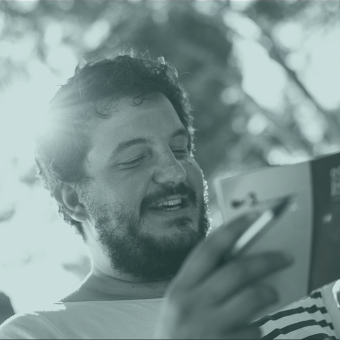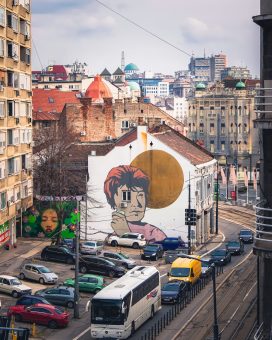
Apart from the conventional challenge of making cities a better place to live, urban development today must also respond to the challenges created by climate change by adapting the physical space to heat waves, droughts, floods, and other increasingly frequent manifestations of these changes. At the same time, urban planning should actively contribute to reducing human impact on the climate by providing efficient and sustainable housing models. Nevertheless, the pressure of capital on urban development is getting stronger, and in the war with profit, green space almost always loses. We talked about the problems of urban planning in Belgrade and possible solutions with Marko Aksentijević, Programme Coordinator from the Ministry of Space.
“The concept of the 2024 General Spatial Plan of Belgrade proclaims a healthy city, revitalization, and preservation of the urban core, increasing energy efficiency, resilience, and decentralization as its goals. To make this decentralization principle operative, the plan envisages the relocation of sports fields, colleges, and hospitals, to reactivate these “attractive and marketable locations”. Instead of more social and green infrastructure, we get more concrete and bigger crowds,” Marko explains.
The problem also lies in the fact that the plan fails to consider the demographic study, although it is an integral part of the plan, which unequivocally predicts a population decrease. Instead, it has been projected that the city will gain additional 100,000 inhabitants and therein lies the answer to the question of how to make city development more sustainable – by planning in accordance with the real needs of people, not capital. According to the preliminary data from last year’s census, 136,336 new apartments were built in the last 11 years, while the number of households increased by only 46,414.
“In Belgrade, at the same time, there is a large overpopulation of apartments and a large number of empty apartments. This is not a characteristic of a city that operationalizes its resources well, and it is certainly not the direction in which it should continue,” says Marko Aksentijević.
IN FOCUS:
- GREEN KILOWATTS FOR SECURE SUPPLY
- INTELLIGENT ELECTRIFICATION FOR THE INDUSTRY
- ENVIRONMENTAL PRESERVATION IN LINE WITH PRIORITIES AND STANDARDS
Illegal construction
Illegal construction used to be tolerated in the past because it was mainly family houses, the construction of which solved the housing problem of many families who immigrated due to the wars in Yugoslavia that were illegally built.
“In the last 15 years, entire buildings have been built illegally because certain property developers are tolerated, as they always find it more profitable to subsequently legalize the building than to build it in line with regulations and with all permits obtained. Thus, the developer generates faster and bigger profit and the future tenants and the city administration are left with the hassle of utility infrastructure. In the parts of the city where this is most pronounced, the spatial plans show post-festum what has been built and what needs to be upgraded accordingly regarding utility infrastructure rather than planning new development. Such a situation makes any planned city development impossible,” explains Marko.

It also inevitably causes a problem with the traffic infrastructure. The widening of streets congested at rush hour and which often have only one lane in each direction often requires the expropriation and demolition of not only individual houses but also entire buildings that have sprung up in the last few decades.
“The city is planning to drill a tunnel stretching from the Faculty of Economics to Despot Stefan Boulevard, and that is perhaps the most vivid example of where we have space left for constructing infrastructure; that is underground. However, if we look at the plans for the subway, we don’t have many reasons for optimism,” Marko adds.
Speaking about traffic, he says that the subway construction could cause fewer traffic jams. On the other hand, the subway’s performance will depend a lot on the location of its lines.
”The current plan for the first line envisages that it will stretch from Makiš via Belgrade Waterfront to Mirijevo; that is, it connects large housing construction projects that most have yet to take place instead of connecting those parts of the city where people already live and which they actually frequent, such as are the Clinical Center and the Railway Station, and traffic jams are frequent. One part of the public, led by the Faculty of Civil Engineering, believes the route should go from Zemun to Kralj Aleksandar Boulevard. The city government has announced that the subway lines are subject to change, which is a good signal, but it is probably also a sign that we will have to wait for a long time to have a subway,” Aksentijević points out.
According to current forecasts, the average speed of cars moving through the city is expected to decrease from 31.6 km/h, as it was in 2015, to 16 km/h in 2033. Due to constant motorization, city traffic will slow down twice more in the next 18 years. For the forecasts to be proven wrong, the city authorities need to enable and stimulate alternatives to private cars – from public transport to walking. One of the solutions is cycling. However, there must be an adequate spatial infrastructure to promote cycling.
Prepared by: Katarina Vuinac
Read the story in the new issue of the Energy portal Magazine ENVIRONMENTAL PROTECTION



